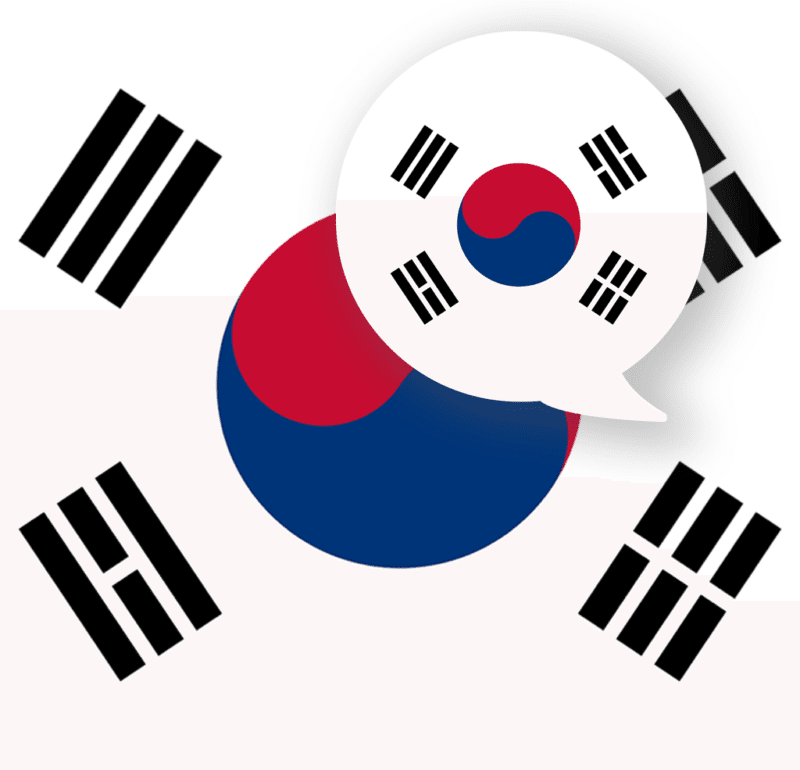You are really interested in the Korean culture, looking to learn Korean and sound like native speakers, but are not happy with hitting the class? No problem. There are plenty of functional and FREE Korean language learning apps available for every major operating system.
To save users the time of sifting through them, we here at 10 Magazine have singled out 10 of the best free Korean learning apps for Android and Apple available today in 2022. Don’t worry it is suitable for complete beginners to more advanced learners! Enjoy!
Korean Learning Apps For Beginners
TenguGo Hangul (Apple only)
A beginner-only app, Popping Korean mainly illustrates the pronunciation of the Korean alphabet through audio and animated demonstrations of mouth and tongue position.
Though the content of the app is rather limited, the animations are clever and clear with the added bonus of having a cute monster theme!

A second section of the app titled “Rhythm Hangul” is unlikely to benefit most users; however, the “Secrets of Hangeul” section, though presented as a seeming afterthought, provides valuable information on the basis for the creation of Hangul and might help learners to solidify some of the concepts.
Korean Learning Apps For Novices
This app offers practical words and phrases neatly organized into categories such as Romance (“Can I have your number?”) and Shopping (“What kind of colors do you have?”).
For each piece of vocabulary, you’re given the usual Hangul/Romanized spellings and audio clip in addition to the option to listen to the audio at a slower speed or to record your own voice for comparison.

The app has both a free and paid version, but you can access the paid sections by viewing a five-second ad. This one also is expanding steadily and offers the option to follow on Facebook and Twitter for updated categories.
This sweet and simple language learning app is geared towards teaching you practical phrases and having you use them in everyday life. The content is very auditory-heavy, with clear voice recordings of every phrase and prompts to repeat and record yourself.
Vocabulary and grammar lessons are combined together in units called “getting around”, “asking opinions”, and similar phrases. We loved the timer feature on the lesson quizzes, which added a competitive edge, as well as the option to download lessons offline.
Unfortunately, you need a group subscription to sign up with Mango Languages as they sell their service to larger educational institutions like universities, public libraries, and community centers. Check in with your local library or public school system to see if they are subscribed; if so, you now have access to 70+ languages on top of Korean.
Korean Learning Apps For All Levels

LingoDeer features an innovative and fun approach to learning that’ll get you speaking right away on day one and then build steadily toward fluency.
The lessons start simple and follow a building block approach so that you can intuitively sense your improvement and progression with each lesson. And instead of random lists of words and phrases like many other apps, LingoDeer’s well-rounded lessons integrate vocabulary, sentences, and culture organically — so that you can put your new skills to use right away in real life.
But language apps only work if you actually want to use them, so LingoDeer presents a variety of lesson and quiz formats to keep things fun and engaging. Plus, you can rack up achievement trophies to keep track of your improvement and successes.
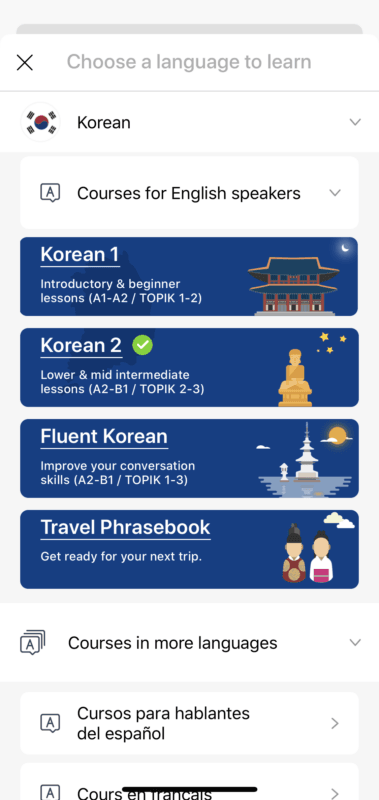

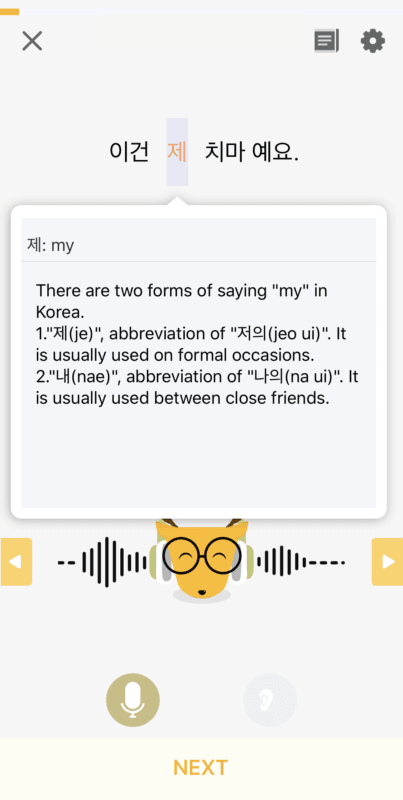
Hello Talk is an app that matches you directly with people who are fluent in the language you want to learn and want to learn the language that you’re fluent in. For example, if you were a fluent English speaker but wanted to learn Korean, you’d be matched with someone fluent in Korean and was looking to learn English. A German looking to learn Japanese would be linked to a Japanese person looking to hone their German, etc.
It’s a simple enough concept to grasp and is much like the modernized version of old-school pen pal programs.
It’s easy and convenient – since most of us have our phones on us throughout our day anyway. What’s more, it’s safe and non-committal – two components that millennials love.
Similar to the ($24.99) Anki, Memrise is a powerful and intelligent flashcard system that allows users to submit their own vocabulary decks. This means you can download hundreds of vocab lessons for free from TOPIK prep books, native-speaker slang indexes, or Sogang and Yonsei University compatible curriculums for FREE.
The app goes through vocabulary units using mix-and-match games, auditory quizzes, spelling challenges, and definition prompts so that the word is implanted in every part of your brain.
In addition to the content, a cute, little seedling emoticon pops up in the corner during review sessions and blooms into a purple daisy when you have finally mastered a word.

TOPIK One (Android only)
For those interested in taking the actual TOPIK exam, this app presents you with a real previous version of the test split into the former beginner, intermediate, and advanced test levels.
Within each, you can practice the four sections of Vocabulary and Grammar, Writing, Listening (requires downloading extra files), and Reading by clicking on the appropriate answers. For some, seeing and trying just this one version of the test might be useful enough.
If you want continued practice, the app’s designer also offers a cheaply priced TOPIK test app for each of the three ability levels, allowing the user to access 15 more previous version of the test.

Dongsa (Android only)
“Dongsa” means “verb” in Korean, and that is exactly what this app focuses on. This tool is all about conjugation: put in the verb stem and you’re given every imaginable form, from high to low, for regular, irregular, common, and obscure.
If you do a fair bit of writing practice or are studying for a test that demands proper form for each occasion, this is sure to be a simple and handy app.
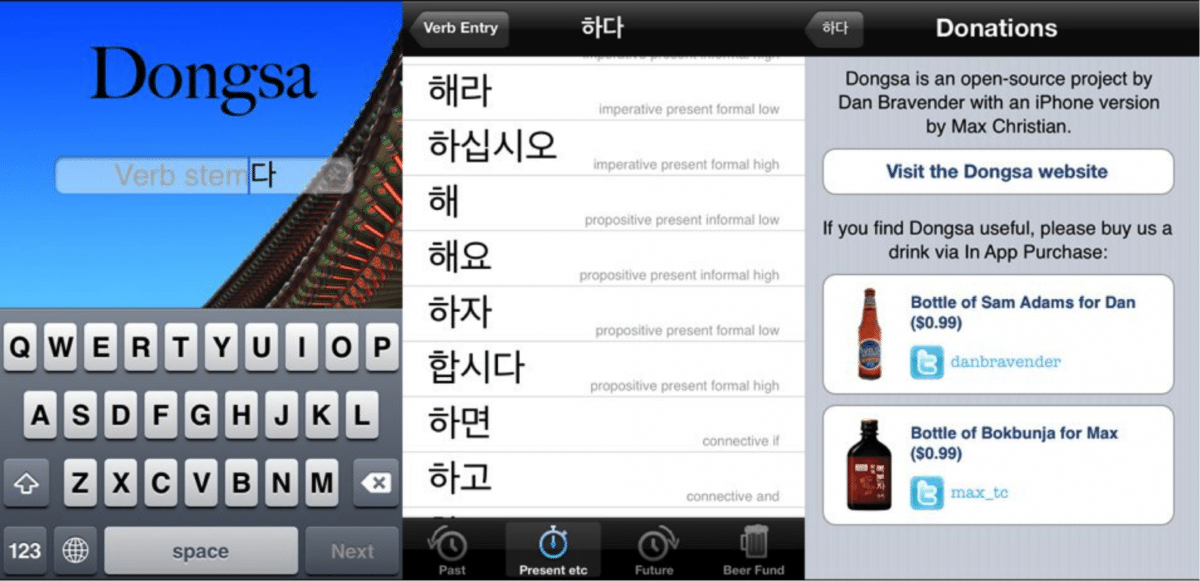
Learn Korean – Grammar (Android Only)
Throw out that 10lb brick of a grammar book, this application has gathered it all in one place for you, but splits the grammar structures into bite-size, relevant, smartphone-friendly units. A unit will be named after what you can accomplish by using the grammar in it, such as “expressing contrast”. The app explains the structure and use of each grammar, then it offers several practical sentence examples accompanied by audio. You can find the Grammar section in the side menu of the app.
On the app’s main page, you can find numerous categories containing useful words, sentences, and expressions that are related to each of these specific categories, so Learn Korean – Grammar will help with developing vocabulary, as well. You can also test your knowledge and progress through the app’s Quiz section.
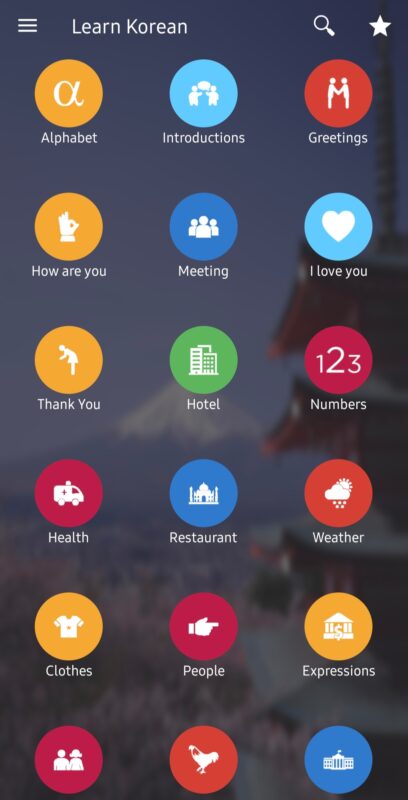


When you are thinking about apps to learn Korean you must be used to seeing applications proposing only written content and barely training you to speak in Korean. Especially when you are a beginner.
Well, Teuida is proposing a new way to learn Korean by immersing you right away in different situations where you have to follow a script and speak from the first lesson!
If you want to improve your speaking skills and build your confidence, Teuida is a great application to do so! It will feel like you are talking to someone in real time but without the stress of talking to a native Korean speaker directly. You can then improve your speaking skills at your own pace, stress-free!

There are many other Korean learning apps out there but the ones we chose are reliable, easy to use, and give a good “bang for the buck” (offering many lessons before in-app purchase or being totally free!) These are all study apps meant to complement Korean language studies in the classroom and everyday setting.
In any case, there are more Korean learning apps and Hangul-based offerings in the mobile world now than ever before, and many of them require a minimal time commitment for each use. If you’ve been making excuses not to learn Korean, now is the perfect time to download and start learning.
If you found this article helpful, leave a comment below! You can also check out our article on where to find Korean language classes and programs in Korea if you prefer to have a traditional class experience! And, you can check out our video at the top of the page for 6 helpful steps on how to study Korean by yourself.



